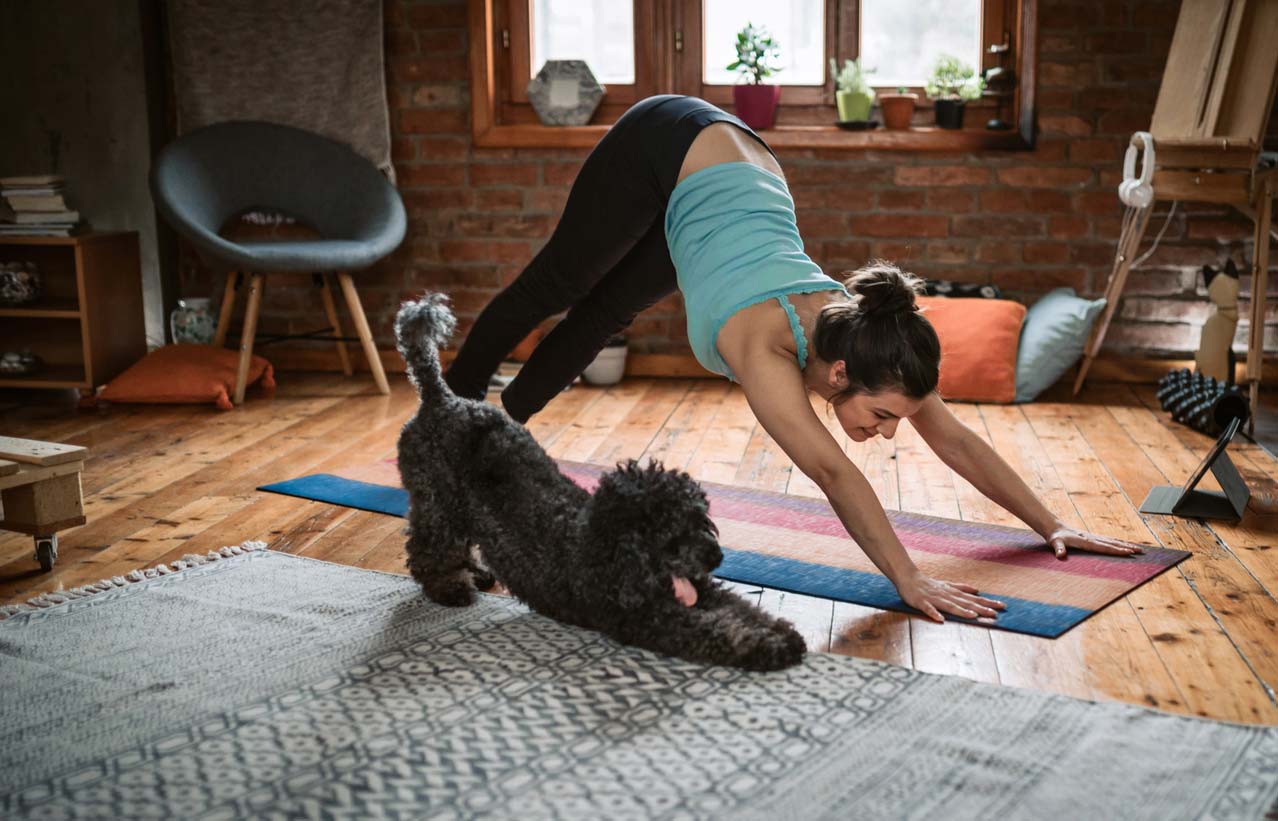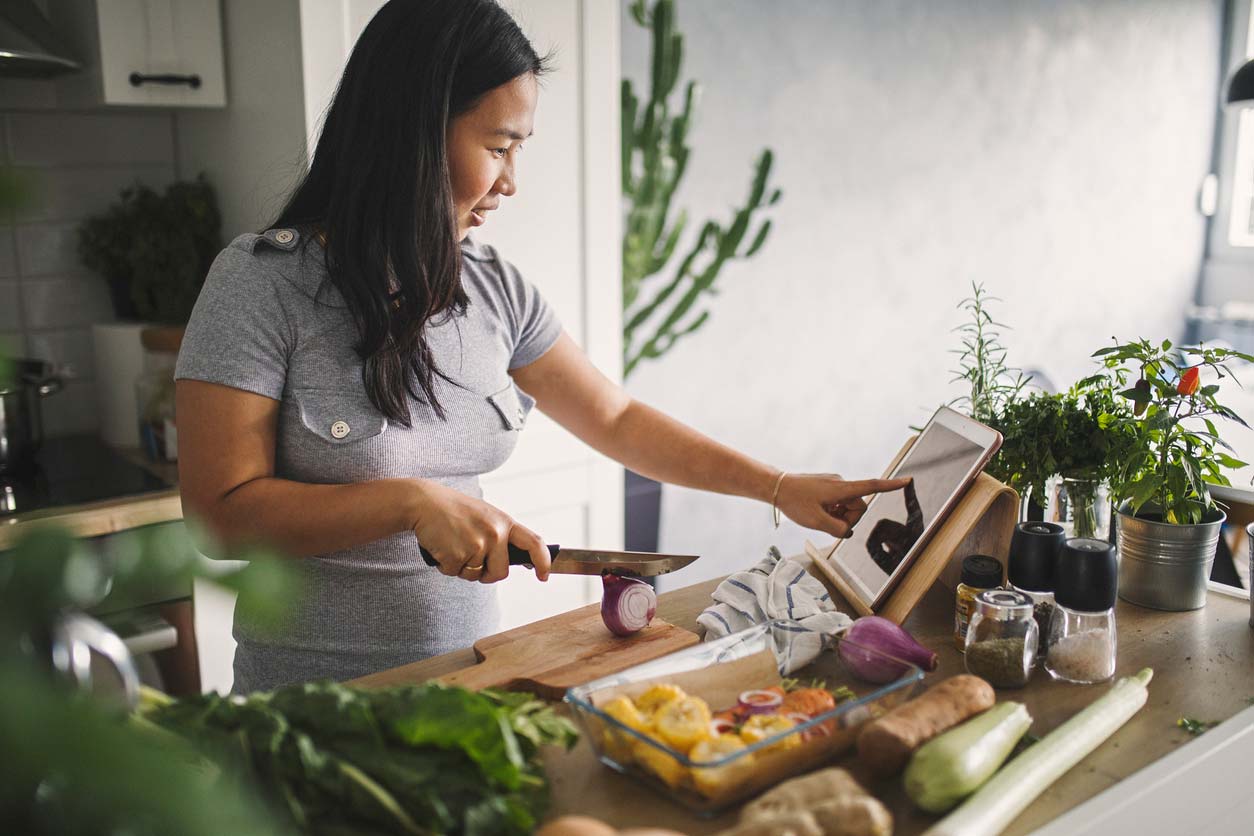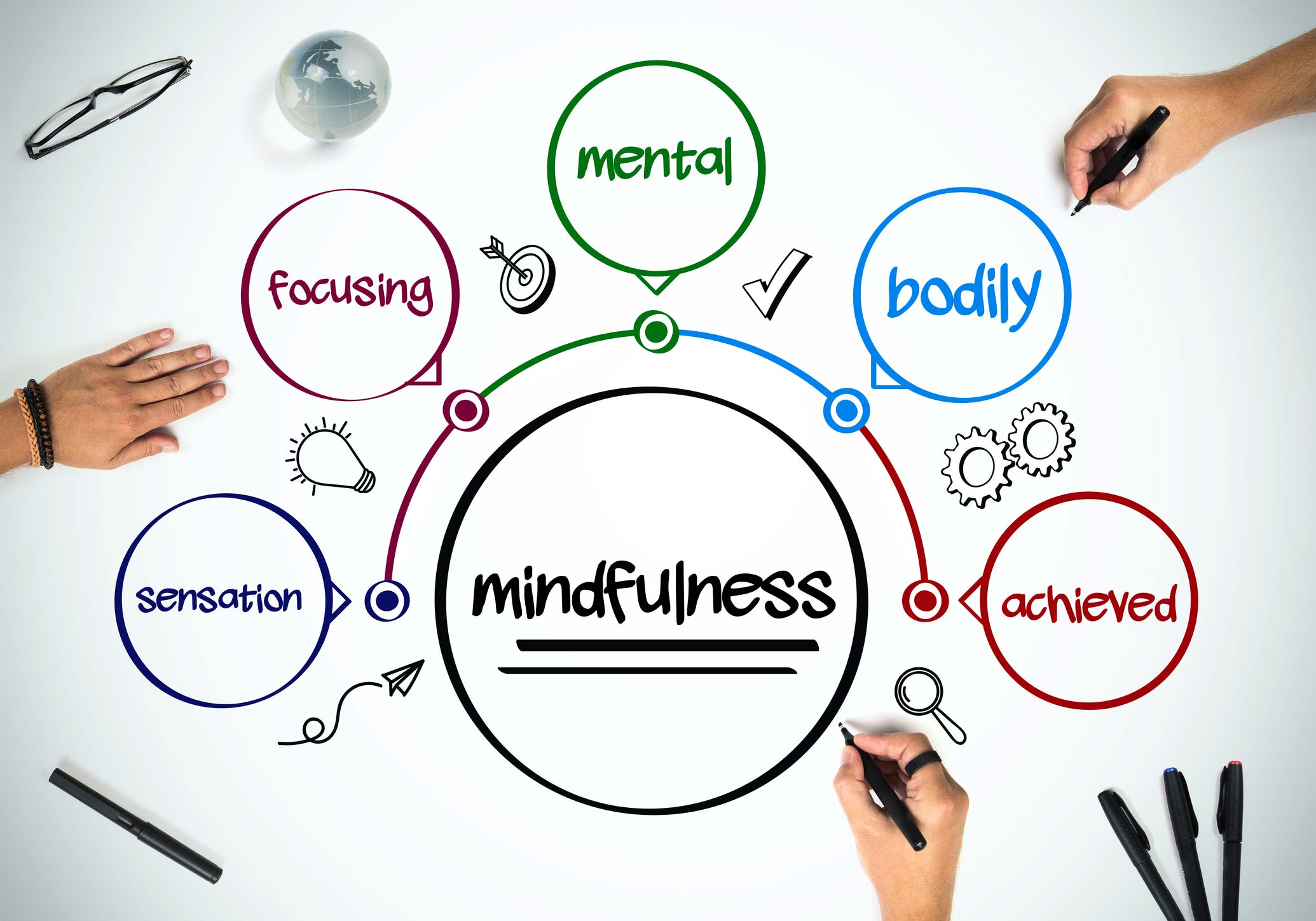By Elizabeth Markle, PhD, Co-Founder, Open Source Wellness and Professor of Community Mental Health, California Institute of Integral Studies
It’s a very, very strange time. And while we’re all (appropriately) focused on caring for the physical health of ourselves, our communities, and society at large, our mental, emotional, and social health needs are quickly emerging as profoundly important as well.
I’m executive director of Open Source Wellness, where we believe that Community Is Medicine! We cultivate in-person and virtual communities where members learn and practice health and wellness strategies that generate human health, well-being, and resilience. Today, I’m happy to share some of what we have learned for your reflection and personal practice during this time.
Freedom and Containment
During my first day of graduate school to become a psychologist, a wise, mischievous, and provocative professor said to my class:
Human suffering is often about freedom and containment. When we have too much containment, we scream for freedom. “Let me be me! I need space! Don’t tell me what to do!” But when we have too much freedom, we start to feel adrift. Fearful. Lost in space… and suddenly we are longing for containment. “Hold me close! I need to feel safe!”
My years of work as a therapist, professor, and community member (did I mention that I live in a cooperative household of eight adults?) have made the wisdom of this insight so clear to me. Our interpersonal upsets and inner pain are so frequently a form of rebelling against too much containment (“Don’t fence me in!”) or protesting not enough contact or security (“Where did you GO?”)
Context Within the COVID-19 Pandemic

What does all of this have to do with a global pandemic, social distancing, and the disruption of everything?
First, many of us live in places where some of our everyday social structures have been altered, and some have even evaporated. These structures normally create connections: in meetings and at the water cooler at work, in class and at the playground at school, at the gym, the pub, the restaurant, the baseball game, and the coffee shop. Importantly, they also create distance. We say goodbye to our partners and kids in the morning, and we greet them again in the evening. All of this used to happen automatically, without much effort on our parts. It’s been built into the structure of our lives. By nullifying our familiar social structures, the pandemic is creating new levels of chaos and confusion for many people. It can feel like we have to reinvent ourselves and our lives in the context of a totally new (and for many of us, terrifying) landscape.
Creating Health and Wellness Strategies to Thrive
It’s normal to stagger when our old structures change. And today, we have the opportunity (and frankly, the imperative) to create new structures — intentionally and by design. For our well-being, and the well-being of our families and communities, we are called upon to actually generate sustainable structures that produce sanity, health, and human thriving.
How? At Open Source Wellness, we help folks create daily structures using a “Universal Prescription”: MOVE, NOURISH, CONNECT, BE.

Whether you’re in generally good health or struggling with chronic physical or psychological challenges, we believe that you — and everyone else — needs these four things every day!
1. Move

Our bodies need to move. Every day. They need to stretch, reach, twist, bend, step, and sweat to whatever degree works for your unique shape and constitution. They don’t care if it’s at the gym, out in the neighborhood, or in your living room, or in the garden — they just need activity. It’s not just about “staying in shape.” It’s about your immune health and your mental health as well! As I tell my patients and students, physical activity is, in many cases, a stronger intervention for depression or anxiety than medication. Build movement into your daily structure, at least 20 minutes/day (and ideally more)! YouTube exercise videos range from three-minute workouts to more than an hour, and many of them are family-friendly as well.
2. Nourish

At Open Source Wellness, we suggest setting up a daily meal structure that fills you with nourishing, healthy foods: Foods that make you feel lively, focused, resourced, and sane.
A balanced and nutritious meal sets you up for steady energy, mood, and motivation throughout the rest of your day. And time and again, we see that a whole foods, plant-centered diet, that’s abundant in fruits and vegetables, is good for your gut, your brain, your vitality, and your overall wellness.
Always wanted to make a dietary change, learn to meal prep, teach your kids to cook, or sample a new cuisine? Now’s the time! Structure one or two 30-minute chunks of time focused on good food into your days.
3. Connect

This one, now more than ever, is key. Humans need to feel connected. We need to feel seen, heard, and understood by other humans — and to extend the same in return. And since it might not “just happen” throughout your day, you’re going to need to schedule it. More to the point, you’ll need to ASK FOR IT. To get vulnerable enough to say, “I really want to connect with you. Can we talk?” Tell the truth about how you’re feeling and what you’re experiencing. Invite someone else to do the same and listen with kindness and generosity.
This can happen in person, cuddled up on the couch, or out on the porch from six feet apart. It can happen over Zoom, Skype, or even on the phone. Love and human connection can transcend space and circumstance.
Here’s my belief: Truly high-quality human attention is one of the world’s most precious resources. It is focused, gentle, present, open, non-judgmental, interested, curious, and caring. It is not distracted, superior, advising, waiting-for-you-to-stop-talking-so-I-can-tell-you-what-I-think. It’s what we love about psychotherapy and coaching, and what we desperately wish our partners, families, and friends would offer us (and what they desperately wish we would offer them).
But here’s the great thing: This kind of attention-resource — we could call it “attentional capital” — is the regenerative kind. Investing attentional capital in relationships begets more of it. And with intentionality, we can create groups and communities where this is the norm. James Rouse is famously quoted as saying, “A community is a garden in which to grow people.” With high-quality attention, we can create Community as Medicine for ourselves, our families, and our societies.
4. Be

Amidst all the “doing” — the preparing, protecting, adjusting, coping, responding, providing, and procuring — humans need moments to simply be. It’s not necessarily about serenity or warm fuzzy feelings. It’s about pausing long enough to let your nervous system come back to baseline after prolonged activation. Experiment with what works for you. If meditation or guided relaxation works for you, great! If watching a crappy TV show while snuggled into the couch feels good, then that can work, too. Notice how you feel after different ways of being, and find what helps you feel more calm, present, and at peace.
A Note About Suffering
If painful emotions get too loud or overwhelming when you try to slow down, you may encounter one of the great paradoxes of being human. Here’s how I see it: We all want to feel good, be happy, and experience peace. And sometimes, we all experience exactly the opposite: pain, distress, fear, grief, dis-ease. The catch is that in moments of suffering, if we get upset or angry or fearful about the suffering (Why is this happening? I don’t want to be feeling this way. It shouldn’t be like this!), our suffering tends to tighten, like a knotted rope when you pull on both ends. Suffering about suffering is a tried-and-true way to maintain suffering. Tricky, right?
The access point to peace from suffering is, paradoxically, to fully accept the pain you’re feeling right now. As much as possible, to befriend it, and to make it okay for existing, exactly as it is, at this moment. And from that space, even for just a micro-moment, you might experience a bit of ease – of being ok with (while not necessarily thrilled about) what’s happening. Tightening around pain makes the discomfort far worse. Relaxing into it can create more space and ease.
So, if slowing down to just be ends up surfacing painful feelings, here’s my recommendation:
- First, take a moment to see if you can befriend them. Welcome them. Invite them to be present, just like a loving and fearless friend or counselor might say, “Tell me all about it!” Bring the same loving attention to your own feelings that you might bring to a friend in need.
- Notice what happens. If you find some increased capacity to be with the pain, great! If it shifts in quality, intensity, or flavor, that’s fascinating! And if not, if it still feels overwhelming after a few minutes – it’s fine to “change the channel.” Do something that comforts you (Movie? Call a friend? Go for a hike? Take a warm bath?) and bring kindness to that too.
An Opportunity to Practice These Health and Wellness Strategies
How do we apply all of this? Here’s where we often start at Open Source Wellness: a personal well-being inventory. How are you doing with each of the four aspects of the “Universal Prescription”? Try rating each one (MOVE, NOURISH, CONNECT, and BE) on a scale from 1-10, with one being “I’m nowhere near meeting my goals for this.” And 10 being “I’m feeling great about this, and my behavior totally aligns with my values.” You might also add a line about why you gave the rating you did, and one small, concrete experiment you could try to see if it makes a difference!
Sample Well-Being Inventory
As an example, here’s mine for today:
- MOVE: 7
- Why?
- I have a pretty good morning movement routine, but a minor injury has me feeling less strong than I’d like.
- Next Step:
- Find a Youtube video of a 10-minute indoor workout, and try it tomorrow morning!
- Why?
- NOURISH: 6
- Why?
- I’ve mostly been eating foods that make me feel healthy and alive – and then eating some sugary things (hellooo, chocolate!) on top of that, which makes me feel exhausted later in the day. Room for improvement!
- Next Step:
- I’ll add some greens to my breakfast, and hold off on chocolate until after 3 pm as an experiment, tomorrow.
- Why?
- CONNECT: 6
- Why?
- I’m lucky to have housemates to chat with informally throughout the day, but I miss deeper connections. Also, being single and sheltering-in-place is not optimal!! (That said, my partnered friends aren’t reporting that it’s a cakewalk, either!)
- Next Step:
- Schedule 2 deeper, 1×1 conversations by phone this week with friends.
- Why?
- BE: 4
- Why?
- I’m still doing my morning meditation and journaling, but the physical isolation from the rest of the world has my stress level elevated.
- Next Step:
- I’d like to try instituting “Afternoon Veg Time”: 20 minutes of total non-productivity!
- Why?
As you do this personal well-being assessment for yourself, what do you notice? Which of these four practices do you incorporate effortlessly, as a part of your daily routine? Which ones might need a bit more attention, more practice, or more cultivation?
At Open Source Wellness, diverse communities come together to practice these four things, and to connect deeply with each other. Here’s a video of our virtual groups in action, with participants sharing about their experiences with the exercise above:
https://www.youtube.com/watch?v=4URsCb-QWQo
To join an Open Source Wellness virtual group, you can sign up HERE, and we’ll reach out!
In Summary
In short, this time is an opportunity to get INTENTIONAL. To choose rather than to drift. In the absence of many of the things that normally dictate our days, we are called on to create the structures that will support our health, physically and emotionally, in a time of profound uncertainty. Try out health and wellness strategies like MOVE, NOURISH, CONNECT, and BE into your days, and let us know how it goes for you!
And in case the term “social distancing” bums you out as much as it does for me… try “expansive solidarity” instead. We’re right here, in this together… spaciously.
Tell us in the comments
- How are you feeling?
- What health and wellness strategies have you been doing to support yourself during social distancing?
- How can you incorporate the Universal Prescription (Move, Nourish, Connect, and Be) into your life more?
Feature image: iStock.com/atakan




